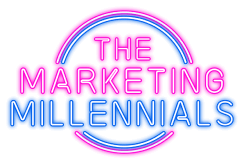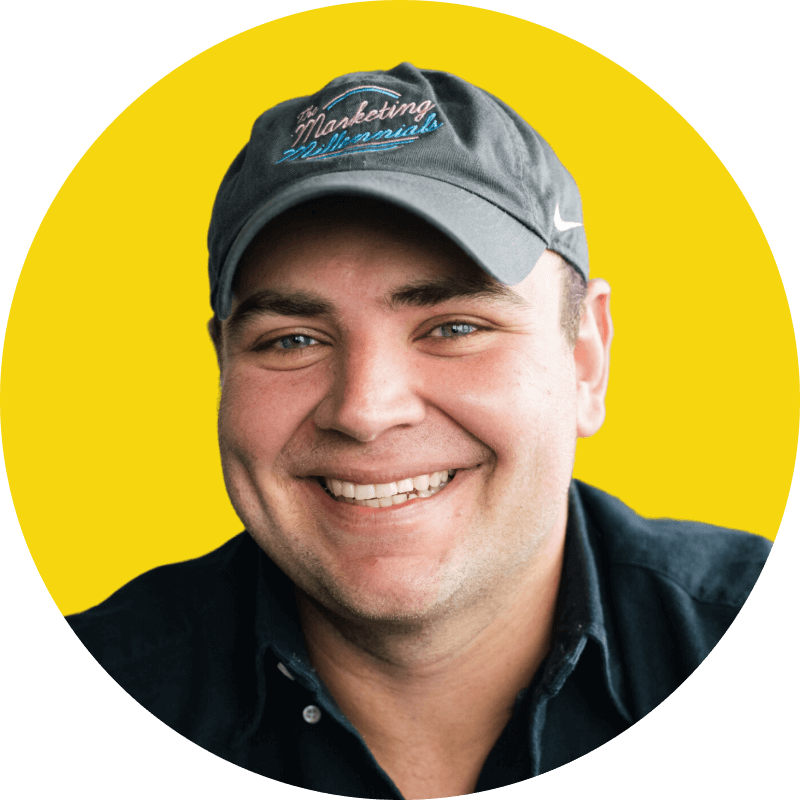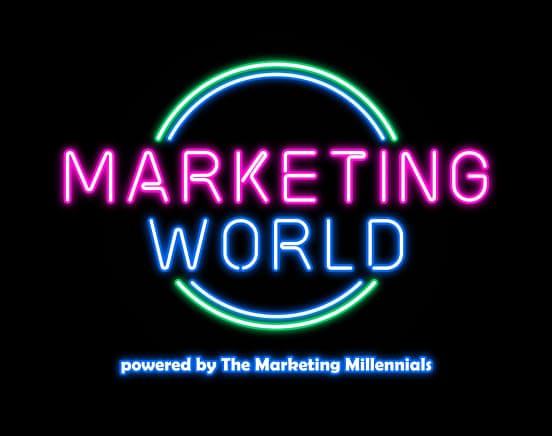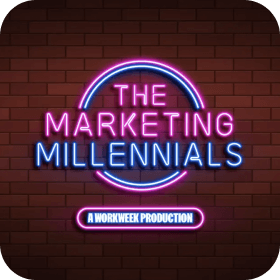Well, not actually but you get my point.
Marketing Bestie, meet Amrita Mathur. VP of Marketing at Superside, yes she is a BEAST, Amrita let us in on the secrets behind building a DesignOps team to maximize efficiency among creatives.
Here’s what she had to say on The Marketing Millennials Podcast in her own liiiightly edited words.
1. Setting Creative Up For Success:
“You can’t break through any ceiling without good creative (this is my new life motto).
You need to fund creative the same way you fund any other part of your organization.
They’re all the same, they’re all connected. That’s number one. The second thing is building a centralized creative team, with every single person on that creative team specifically aligned to a marketing function.
They can be aligned to more than one. For example you might have an animator that’s aligned with paid media, and might be doing work for TikTok in particular.
Establish every person on the creative team in cross-functional pods.
75% of creative’s work is going to be for their pods. There’s going to be some reactive tasks that come down the pipeline, leave room for that. But creative should essentially be dedicated to their buckets of work.
There’s enough variety that it’s not repetitive, but at the same time it’s a playbook to maximize efficiency. The speed at which you can move is amazing.
Creative will come back with the first iteration and boom you’re done, deploy the campaign right now.
They just get it. They’re in all the same meetings. They understand what’s going on (EFFICIENCY).
That’s the key in turning them from being short order cooks to more creative Michelin star chefs.
2. How to Hire Creatives:
You want to find the creative that’s the best at a specific task, obviously within your budget and location.
Using the animator example again, you want a really good animator, but they’re not necessarily a brand person, so they’re not thinking up illustrations from scratch.
You want to have an illustrator on the team that the animator can work with, take that illustration, and do magic with it.
That is a key criteria. Another example is a person from our video team is entirely dedicated to YouTube, and there’s so much nuance to YouTube.
Everything from how the algorithm thinks about thumbnails, how much testing you have to do, trial and error with closed captioning.
So there’s a video team that’s dedicated to the YouTube channel, they know all the ins and outs of that platform (shoutout all one-person team Marketers doing all these tasks by themselves).
That understanding is critical and you need to feel that out in the interview process.
3. Setting Goals for Your Creative Team:
There is an eternal debate, how do you OKR or KPI a creative team or person, and how tightly do you tie them to those results?
With the pods we made, everyone has the same goals. That’s how we set it up.
We want the hit rate to be extremely high. How many times do you actually hit the ball out of the park?
The whole team should care about MRR, which is revenue for us. But revenue is such a nebulous thing, and there’s a long road to earn that dollar that we need certain leading indicators to that revenue.
Each pod identifies their own leading indicators. If you’re in the TikTok or YouTube pod, we really care about one leading indicator, views and engagement. We want everyone to care about that, including the creative.
That is incredibly empowering because everyone knows what we’re gunning for (this is HUGE). Everyone knows that there’s a chance that we won’t reach that, but we have a good baseline, we have some good hypotheses, and here’s our best shot.
4. What Design Ops is:
All of these different teams have ops counterparts, like DevOps, MarketingOps, and for some reason creative doesn’t have that defined role.
There’s a very famous statistic which says only 40% of a creative’s time is spent on actually creating a design (WHAT). Let’s say you’re a graphic designer, you’re spending only 40% of your time actually designing.
The rest of the time you’re doing project management, slack, and interpreting briefs. If you’re in agency land, you’re going back and forth with the client, you’re sometimes doing pitch work. It’s a sh** show.
So this idea of design ops is simply that there’s a person or a team that takes care of tooling, management of all incoming projects, initiatives, and requests. All of that thinking and planning does not need to be done by the designer, videographer, or editor, it’s a waste of their time.
So design ops is there to take that off their plate (I’m in love with this idea now).
5. Scaling Your Design Team:
Design and creative are always going to be in catch up mode. There’s no way around it.
People have this utopia in their mind, like one day they’ll have enough resources, or enough headcount that they can do everything (I’m people LOL).
Resign yourself to the fact that there’s not going to be any such day ever. Acknowledgement is step one. Step two is to plan for it.
You can hire design ops people, you can have all the right systems and toolings in place, but in the event that a customer needs one thing in particular and you don’t have the specific skillset on your team, what do you do?
The answer is clear, find reliable freelancers to use to your advantage for your campaigns, in an on-demand way. That’s how you scale.
Preserve your existing design teams capacity and mental bandwidth for things that you consider core, things that you consider extremely strategic. Focus is key regardless of what role it is in the company.
Focus is very important, so you don’t want to break that focus over and over. The context switching has a huge impact on quality.”



